‘The Great American Stickup’: How Wall Street Occupied Washington
The big cop-out in much of what has been written about the banking meltdown has been the argument by those most complicit that there was "enough blame to go around" and that no institution or individual should be singled out for accountability. "How could we have known?" is the refrain of those who continue to pose as all-knowing experts.The big cop-out of the banking meltdown is that no institution or individual should be singled out for accountability.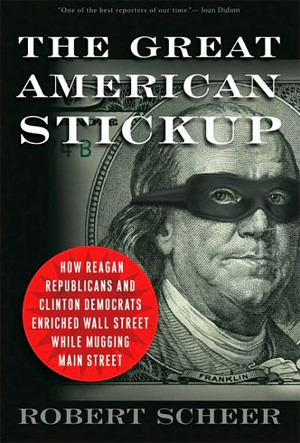
Excerpted from “The Great American Stickup.”
“How did this happen?” ~ President George W. Bush
“It was a humbling question for someone from the financial sector to be asked–after all, we were the ones responsible.” ~ Treasury Secretary Henry M. Paulson Jr., former Goldman Sachs CEO
They did it.
Yes, there is a “they”: the captains of finance, their lobbyists, and allies among leading politicians of both parties, who together destroyed an American regulatory system that had been functioning splendidly for most of the six decades since it was enacted in the 1930s.
“They” will emerge largely unscathed—indeed, likely wealthier—from exploiting the newfound bargains in foreclosed properties and bankrupt businesses that this turmoil provides to those with access to ready cash. And even as they make taxpayers foot the bill for their grievous greed and errors, they are eager to cover their tracks and unwilling to accept responsibility for the damage done.
The big cop-out in much of what has been written about the banking meltdown has been the argument by those most complicit that there was “enough blame to go around” and that no institution or individual should be singled out for accountability. “How could we have known?” is the refrain of those who continue to pose as all-knowing experts. “Everybody made mistakes,” they say.
Nonsense. This was a giant hustle that served the richest of the rich and left the rest of us holding the bag, a life-altering game of musical chairs in which the American public was the one forced out. Worst of all, legislators from both political parties we elect and pay to protect our interests from the pirates who assaulted us instead changed our laws to enable them.
The most pathetic of excuses is the one provided by Robert Rubin, who fathered “Rubinomics,” the economy policy of President Clinton’s two-term administration: The economy ran into a “perfect storm,” a combination of unforeseen but disastrously interrelated events. This rationalization is all too readily accepted by the mass media, which is not surprising, given that it neatly absolves the majority of business reporters and editors who had missed the story for years until it was too late.
The facts are otherwise. It is not conspiratorial but rather accurate to suggest that blame can be assigned to those who consciously developed and implemented a policy of radical financial deregulation that led to a global recession. As President Clinton’s Treasury secretary, Rubin, the former cochair of Goldman Sachs, led the fight to free the financial markets from regulation and then went on to a $15-million-a-year job with Citigroup, the company that had most energetically lobbied for that deregulation. He should remember the line from the old cartoon strip Pogo: “We have met the enemy and he is us.”
For it was this Wall Street and Democratic Party darling, along with his clique of economist super-friends — Alan Greenspan, Lawrence Summers, and a few others — who inflated a giant real estate bubble by purposely not regulating the derivatives market, resulting in oceans of money that was poured into bad loans sold as safe investments. In the process, they not only caused an avalanche of pain and misery when the bubble inevitably burst but also shredded the good reputation of the American banking system nurtured since the Great Depression.
If we accept a broad dispersal of blame or a sense of inevitability — or simply ignore the details, since they can be so confusing — we lose the opportunity to rearrange our institutions to prevent such disasters from happening again.
That this is true has only been reinforced by the tentative response of the Obama administration in its first year. Even after a crash that economists agree is the biggest since the granddaddy of 1929, the president’s proposed reform legislation stops far short of reintroducing the kind of regulation of the markets that prevented such disasters in the intervening 80 years. We still see a persistent fear, stoked by the same folks that led us into this abyss, that regulation and scrutiny will kill the golden goose of Wall Street profits and, by extension, U.S. prosperity.
If we as a people learn anything from this crash, however, it should be that there are no adults watching the store, only a tiny elite of self-interested multimillionaires and billionaires making decisions for the rest of us. As long as we cede that power to them, we can expect to continue getting bilked.
Three key myths consistently propagated about the financial markets proved devastating in this event. The first is that buyers and sellers are all logical and well informed about what they are doing, so the markets will always be “corrected” to provide accurate price values. The second is that whatever happens in these “free markets,” the general public will not be hurt — only irresponsible gamblers will lose their shirts. The third is that whenever the government gets involved, it will only screw things up; even if regulators only ask questions, it will poison the pond and spook the fish, to everybody’s detriment.
All of these assumptions were proven false; the brave new world order of super-rational high-tech derivative marketing based on a Nobel Prize-winning mathematical model turned out to be a prescription for financial madness. A win-win system too good to be true turned out to be a cruel hoax in which most suffered terribly — and not just that majority of the world’s population that suffers from the whims of the market, but even some who designed and sold the new financial gimmicks. Left to their own devices, freed of rational regulatory restraint by an army of lobbyists and the politicians who serve them, one after another of the very top financial conglomerates imploded from the weight of their uncontrolled greed. Or would have imploded, as in the examples of Citigroup and AIG, if the government had not used taxpayer dollars to bail out those “too big to fail” conglomerates.
Along the way, these companies — including the privatized quasi-governmental Fannie Mae and Freddie Mac monstrosities — were exposed as poorly run juggernauts, with top executives having embarrassingly little grasp of the chicanery and risk taking that was bolstering their bottom-lines. Worst of all, damage from this economic chain reaction didn’t, of course, stop at the bank accounts of Saudi investors or American CEOs but led to soaring unemployment and federal debt, the acceleration of the home foreclosure epidemic, massive unemployment, and the wholesale destruction of pension plans and state education budgets.
Since the collapse happened on the watch of President George W. Bush at the end of two full terms in office, many in the Democratic Party were only too eager to blame his administration. Yet while Bush did nothing to remedy the problem, and his response was to simply reward the culprits, the roots of this disaster go back much further, to the free-market propaganda of the Reagan years and, most damagingly, to the bipartisan deregulation of the banking industry undertaken with the full support of “liberal” President Clinton. Yes, Clinton. And if this debacle needs a name, it should most properly be called “the Clinton bubble,” as difficult as it may be to accept for those of us who voted for him.
Clinton, being a smart person and an astute politician, did not use old ideological arguments to do away with New Deal restrictions on the banking system, which had been in place ever since the Great Depression threatened the survival of capitalism. His were the words of technocrats, arguing that modern technology, globalization, and the increased sophistication of traders meant the old concerns and restrictions were outdated. By “modernizing” the economy, so the promise went, we would free powerful creative energies and create new wealth for a broad spectrum of Americans — not to mention boosting the Democratic Party enormously, both politically and financially.
And it worked: Traditional banks freed by the dissolution of New Deal regulations became much more aggressive in investing deposits, snapping up financial services companies in a binge of acquisitions. These giant conglomerates then bet long on a broad and limitless expansion of the economy, making credit easy and driving up the stock and real estate markets to unseen heights. Increasingly complicated yet wildly profitable securities–especially so-called over-the-counter derivatives (OTC), which, as their name suggests, are financial instruments derived from other assets or products — proved irresistible to global investors, even though few really understood what they were buying. Those transactions in suspect derivatives were negotiated in markets that had been freed from the obligations of government regulation and would grow in the year 2009 to more than $600 trillion.
Beginning in the early ’90s, this innovative system for buying and selling debt grew from a boutique, almost experimental, Wall Street business model to something so large that, when it collapsed a little more than a decade later, it would cause a global recession. Along the way, only a few people possessed enough knowledge and integrity to point out that the growth and profits it was generating were, in fact, too good to be true.
Until it all fell apart in such grand fashion, turning some of the most prestigious companies in the history of capitalism into bankrupt beggars, all the key players in the derivatives markets were happy as pigs in excrement. At the bottom, a plethora of aggressive lenders was only too happy to sign up folks for mortgages and other loans they could not afford because those loans could be bundled and sold in the market as collateralized debt obligations (CDOs). The investment banks were thrilled to have those new CDOs to sell, their clients liked the absurdly high returns being paid — even if they really had no clear idea what they were buying — and the “swap” sellers figured they were taking no risk at all, since the economy seemed to have entered a phase in which it had only one direction: up.
Of course, this was ridiculous on the face of it. Could it really be so easy? What was the catch? Never mind that, you spoiler! Not only were those making the millions and billions off the OTC derivatives market ecstatic, so were the politicians, bought off by Wall Street, who were sitting in the driver’s seat while the bubble was inflating. With credit so easy, consumers went on a binge, buying everything in sight, which in turn was a boon to the bricks-and-mortar economy. Blown upward by all this “irrational exuberance,” as then Federal Reserve Bank chair Alan Greenspan noted in one of his more honest moments, the stock market soared, creating the era of e-trade and a middle-class that eagerly awaited each quarterly 401(k) report.
Later, in the rubble, consumer borrowers would be scapegoated for the crash. This is the same logic as blaming passengers of a discount airline for their deaths if it turned out the plane had been flown by a monkey. Shouldn’t they have known they should pay more? In reality, the gushing profits of the collateralized debt markets meant the original lenders had no motive to actually vet the recipients–they wouldn’t be trying to collect the debt themselves anyway. Instead, they would do almost anything to entreat consumers to borrow far beyond their means, reassuring them in a booming economy they’d be suckers not to buy, buy, buy.
That this madness was allowed to develop without significant government supervision or critical media interest, despite the inherent instability and predictable future damage of a system of growth predicated on its own inevitability, is a tribute to the almost limitless power of Wall Street lobbyists and the corruption of political leaders who did their bidding while sacrificing the public’s interest.
While much has been made of the baffling complexity of the new market structures at the heart of the banking meltdown, there were informed and prescient observers who in real time saw through these gimmicks. The potential for damage was thus known inside the halls of power to those who cared to know, if only because of heroines like gutsy regulator Brooksley Born, chair of the Commodity Futures Trading Commission from 1996 to 1999. When they attempted to sound the alarm, however, they were ignored, or worse. Simply put, the rewards in both financial remuneration and advanced careers were such that those in a position to profit went along with great enthusiasm. Those who objected, like Born, were summarily crushed.
Of the leaders responsible, five names come prominently to mind: Alan Greenspan, the longtime head of the Federal Reserve; Robert Rubin, who served as Treasury secretary in the Clinton administration; Lawrence Summers, who succeeded him in that capacity; and the two top Republicans in Congress back in the 1990s dealing with finance, Phil Gramm and James Leach.
Arrayed most prominently against them, far, far down the DC power ladder, were two female regulators, Born and Sheila Bair (an appointee of Bush I and II and retained as FDIC chair by Obama). They never had a chance, though; they were facing a juggernaut: The combined power of the Wall Street lobbyists allied with popular President Clinton, who staked his legacy on reassuring the titans of finance a Democrat could serve their interests better than any Republican.
Clinton’s role was decisive in turning Ronald Reagan’s obsession with an unfettered free market into law. Reagan, that fading actor recast so effectively as great propagandist for the unregulated market — “get government off our backs” was his patented rallying cry — was far more successful at deregulating smokestack industries than the financial markets. It would take a new breed of “triangulating” technocrat Democrats to really dismantle the carefully built net designed, after the last Great Depression, to restrain Wall Street from its pattern of periodic self-immolations.
Clinton betrayed the wisdom of Franklin Delano Roosevelt’s New Deal reforms that capitalism needed to be saved from its own excess in order to survive, that the free market would remain free only if it was properly regulated in the public interest. The great and terrible irony of capitalism is that if left unfettered, it inexorably engineers its own demise, through either revolution or economic collapse. The guardians of capitalism’s survival are thus not the self-proclaimed free-marketers, who, in defiance of the pragmatic Adam Smith himself, want to chop away at all government restraints on corporate actions, but rather liberals, at least those in the mode of FDR, who seek to harness its awesome power while keeping its workings palatable to a civilized and progressive society.
Government regulation of the market economy arose during the New Deal out of a desire to save capitalism rather than destroy it. Whether it was child labor in dark coal mines, the exploitation of racially segregated human beings to pick cotton, or the unfathomable devastation of the Great Depression, the brutal creativity of the pure profit motive has always posed a stark challenge to our belief that we are moral creatures. The modern bureaucratic governments of the developed world were built, unconsciously, as a bulwark, something big enough to occasionally stand up to the power of uncontrolled market forces, much as a referee must show the yellow card to a young headstrong athlete.

|
Click here to check out Robert Scheer’s new book,
|
Independent journalism is under threat and overshadowed by heavily funded mainstream media.
You can help level the playing field. Become a member.
Your tax-deductible contribution keeps us digging beneath the headlines to give you thought-provoking, investigative reporting and analysis that unearths what's really happening- without compromise.
Give today to support our courageous, independent journalists.

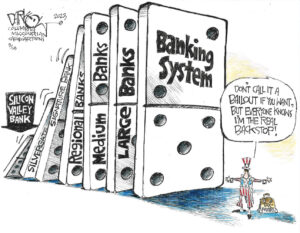
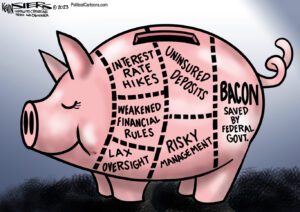
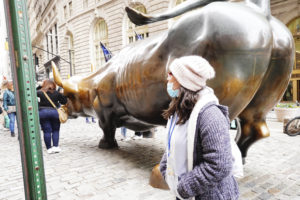
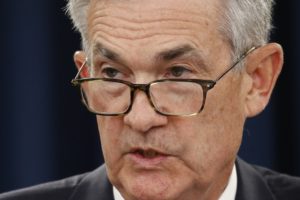
You need to be a supporter to comment.
There are currently no responses to this article.
Be the first to respond.